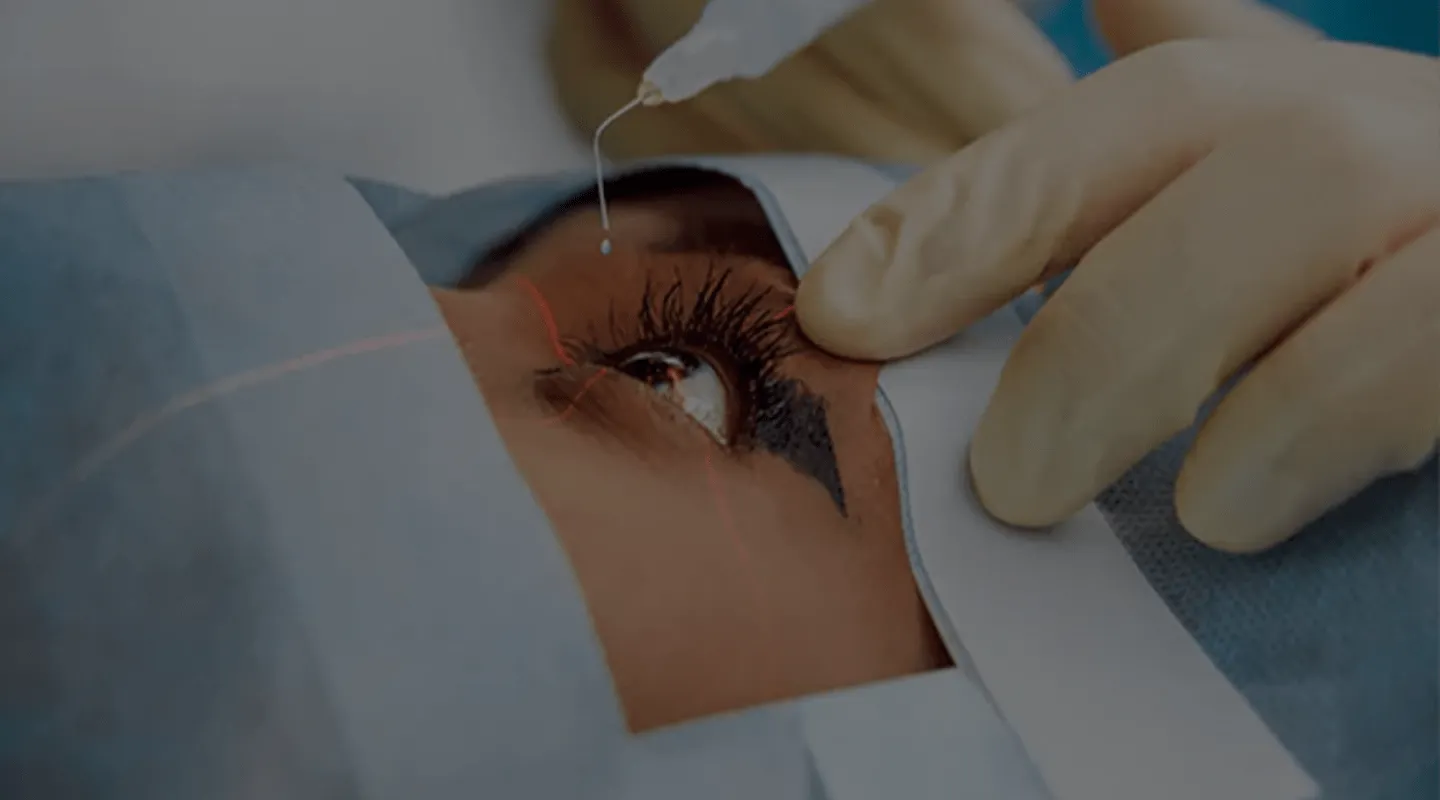
Laser Photocoagulation
Your Laser Photocoagulation in Tunisia at an Affordable Price
Our partner clinics use high-precision lasers in a modern and comfortable setting.
How does it work?
Laser Photocoagulation in Tunisia
Laser photocoagulation is an ophthalmological surgical procedure performed to treat certain retinal pathologies. This technique involves using a laser directly on the retina to promote healing. Thanks to this procedure and its coagulating effect, it’s possible to cure or prevent various eye diseases, such as a retinal tear. Here’s what you need to know about this procedure: its principle, its process, and its prices.
What is Laser Photocoagulation in Tunisia?
Laser photocoagulation is a modern ophthalmological surgical procedure that uses a laser to treat certain retinal diseases. During this procedure, a laser is focused directly on the retina to produce a healing effect. This method relies on the use of specific tools, including a contact lens and a microscope equipped with a laser; the procedure is performed by an ophthalmologist in a suitable setting.
Here are some examples of diseases that can be treated with this technique:
- Retinal tear: Without treating this phenomenon promptly, a retinal detachment can occur, causing further complications. Pan photocoagulation will effectively stop the progression of tears;
- Glaucoma: Glaucoma is a condition characterized by increased intraocular pressure. Treatment will reduce pressure and prevent complications such as reduced visual acuity and eye pain;
- Retinal tumors: This operation will stop the progression of tumors or reduce their size;
Price of Laser Photocoagulation Surgery in Tunisia
Thanks to the packages offered by Tunisia Destination Santé, your medical tourism agency in Tunisia, your laser photocoagulation procedure in Tunisia will cost you much less than in a European clinic. Packages include all expenses related to photocoagulation treatment. You will discover a fascinating country and your operation will take place in a state-of-the-art setting. We invite you to contact us to request a quote.
Your health, our priority.
Request your free quote.
What to Know Before Photocoagulation Surgery
You will need to undergo a complete ophthalmological examination so that the specialist can confirm that this operation is suitable for you and that you have no contraindications. The ophthalmologist will check the condition of your retina and whether it can be treated by photocoagulation. They will also examine the amount of fluid that has accumulated in your eyes. Before the operation, you will also need to prepare a complete medical file, including a health check-up, blood tests, and the history of your previous surgeries. The ophthalmologist will take the time to explain the surgical procedure, its results and potential complications.
Procedure of Laser Photocoagulation in Tunisia
Generally, the procedure is performed on an outpatient basis. During the operation, the surgeon will apply the laser beam to the retina (located deep within the eye). The laser can target a point on the retina with great precision, allowing for effective targeting of the tissues to be treated. One of the following three actions will be performed by the surgeon, depending on the eye pathology you suffer from:
- Repair of retinal tears;
- Coagulation of blood vessels (photocoagulation);
- Destruction of problematic tissues;
Post-operative Course of Photocoagulation
In the hours following the photocoagulation procedure, you can expect some discomfort, but this is predictable and will disappear spontaneously. You may experience headaches, blurred vision, or some painful sensations, but don’t worry. The surgeon will give you eye drops to use at home for a few days. A return to physical activity will only be possible after a few weeks to avoid the risk of complications.
Results of Photocoagulation Treatment
The result of photocoagulation will depend greatly on your reactivity to the first symptoms suggestive of a retinal problem: if you consulted as soon as the first problems appeared and if retinal pathologies were diagnosed and treated quickly, then the chances of recovery will be very favorable. Eye recovery can take many weeks, so patience is required. Products will be prescribed to treat the operated area, and you will need to undergo a series of check-ups with a specialist to check the proper progress of your eye condition.
Our advantages


Your Ophthalmological Surgery in Tunisia with TDS
If you wish to organize your ophthalmological surgery stay in Tunisia and benefit from a laser photocoagulation operation at very attractive prices, simply contact the Tunisia Destination Santé team. Our advisors are always at your disposal to assist you throughout the procedure and to help you organize your trip to our country. Feel free to contact us to request your quote today.
—
Frequently Asked Questions
Recent innovations include the use of new generation lasers that offer increased precision and minimize collateral damage to healthy tissues. Advances such as micropulse photocoagulation allow for safer and more effective treatments, reducing the risk of complications.
Photocoagulation improves retinal microcirculation by destroying abnormal blood vessels and promoting the formation of new drainage pathways, which helps reduce edema and improve oxygen supply to retinal cells.
Yes, photocoagulation can be used to treat peripheral retinal lesions, particularly those associated with diabetic retinopathy and retinal tears. Preventative treatment of peripheral lesions can reduce the risk of retinal detachment.
Photocoagulation is effective in stabilizing diabetic macular edema, but alternative therapies such as intravitreal anti-VEGF injections show faster and more significant results in terms of edema reduction and vision improvement.
Photocoagulation can affect night vision, especially if large areas of the retina are treated. Patients may experience decreased light sensitivity and increased difficulty seeing in low-light conditions.
Photocoagulation is generally not used as a primary treatment for retinal detachments, but it can be used in conjunction with other surgical techniques to seal retinal tears and prevent recurrence of detachment.
Follow-up protocols include regular eye exams, often every 3 to 6 months, to monitor the retina, evaluate treatment response, and detect any disease progression or additional complications requiring intervention.
Photocoagulation can be used to treat certain complications of hereditary retinal diseases, such as neovascularization and retinal tears. However, its use depends on the specific nature of the disease and must be evaluated on a case-by-case basis.
Criteria include the location and extent of retinal lesions, the general condition of the retina, the patient’s medical history, and the presence of complications such as macular edema or neovascularization.
Photocoagulation and anti-VEGF injections can be used in a complementary manner. Photocoagulation stabilizes the treated areas, while anti-VEGF reduces edema and neovascularization, offering a combined approach for more comprehensive management of retinal diseases.
